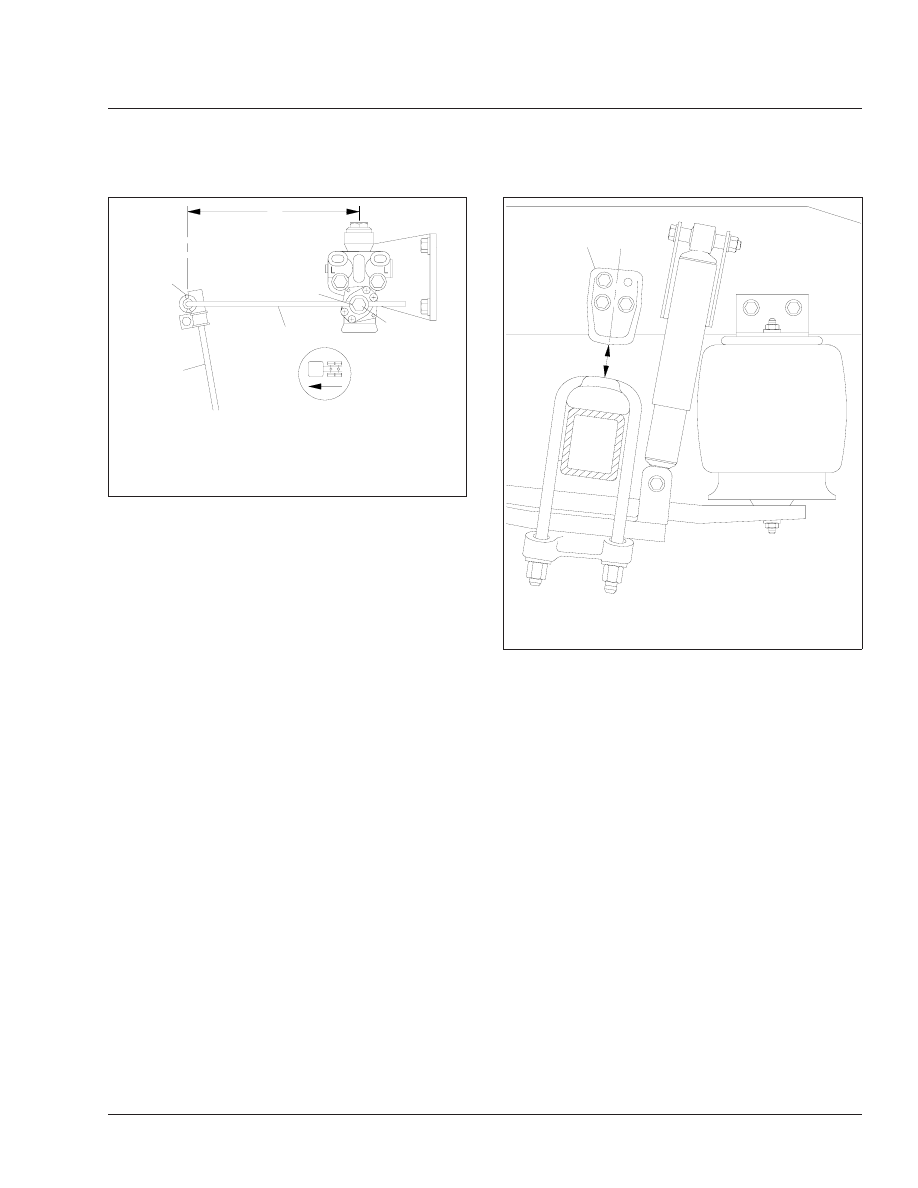Freightliner FLA/FLB/FLC/FLD/FLL. Manual - part 22

5.
On single-drive rear axle configurations, measure
the distance from the bottom of the left axle stop
to the top of the U-bolt pad. On tandem (dual-
drive) rear axle configurations, measure the dis-
tance from the bottom of the forwardmost left
axle stop to the top of the axle U-bolt pad. See
, Ref. A. The correct distance for single
and dual-drive rear axles is between 2-3/8 inches
and 2-7/8 inches (60 to 73 mm).
6.
If the axle stop measurement is not correct, see
Group 32 of the
Heavy-Duty Trucks Service
Manual
for adjustment procedures.
7.
Without detaching the control rods, attempt to
move (by hand) each control-rod end up, down,
in, and out. If there is any movement, examine
the control rod for wear or damage. If a control
rod needs to be replaced, see Group 32 of the
Heavy-Duty Trucks Service Manual
for instruc-
tions.
8.
Inspect the rubber bushings for cracks or cuts.
9.
Check for any shifting of the barpin.
10. Inspect the weld seams between the control rod
tube and the shorter bushing tubes. If there are
cracks, replace the control rod. Do not weld the
control rod for any reason.
11. Raise the rear of the vehicle so the tires just
clear the ground and the suspension is fully ex-
tended. Place safety stands under the vehicle
frame.
12. Squeeze all air springs to check for complete
deflation. If any air springs remain partially or
fully inflated, see "Troubleshooting" in the appro-
priate section in Group 32 of the
Heavy-Duty
Trucks Service Manual
.
13. Inspect each air spring for wear at its connection
to its pedestal. Replace any worn air springs; for
instructions, see Group 32 of the
Heavy-Duty
Trucks Service Manual
.
14. Check the axle connection welds (beam-seat to
equalizing-beam and axle-adapter to axle) for
cracks. If welds are cracked, grind them out and
reweld the parts.
15. Move the axle up and down while checking for
signs of looseness due to worn parts at the front
pivot connections. Replace any worn parts by
3
4
2
A
05/15/95
f320410
1
5
A. Measure the length of the overtravel lever between
these two points.
1.
V-Shaped Mark
2.
Adjustment Locknut
3.
Overtravel Lever
4.
Cotter Pin
5.
Linkage Rod
Fig. 9, AirLiner Overtravel Lever and Linkage Rod
Measurement
08/16/96
f320453
A
1
A. Measure height here.
1.
Left Forwardmost Axle Stop
Fig. 10, AirLiner Axle Stop Measurement
Suspension
32
32/5